Related Research Articles

A merman, the male counterpart of the mythical female mermaid, is a legendary creature which is human from the waist up and fish-like from the waist down, but may assume normal human shape. Sometimes mermen are described as hideous and other times as handsome.
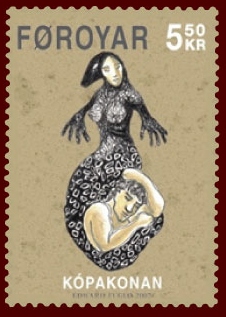
Selkies are mythological creatures that can shapeshift between seal and human forms by removing or putting on their seal skin. They feature prominently in the oral traditions and mythology of various cultures, especially those of Celtic and Norse origin. The term “selkie” derives from the Scots word for “seal”, and is also spelled as silkies, sylkies, or selchies. Selkies are sometimes referred to as selkie folk, meaning 'seal folk'. Selkies are mainly associated with the Northern Isles of Scotland, where they are said to live as seals in the sea but shed their skin to become human on land.
Haukr or Hauk Erlendsson was lawspeaker (lawman) of Iceland, later lawspeaker and knight of Norway, known for having compiled a number of Icelandic sagas and other materials mostly in his own hand, bound in a book called the Hauksbók after him.

Dragons, or worms, are present in Germanic mythology and wider folklore, where they are often portrayed as large venomous serpents. Especially in later tales, however, they share many common features with other dragons in European mythology.

Landvættir are spirits of the land in Old Nordic religion, later folk belief and modern Heathenry. They are closely associated with specific locations and their wellbeing is presented as being required for the land they inhabit to be fruitful. In Old Norse sources, they are depicted as being potentially harmful and capable of driving away unwanted individuals and capable of being frightened through human actions such as usage of carved figureheads on ships or níðstangs. Good relationships between humans and landvættir were believed to be fostered through acts like leaving out food for them however upon the establishment of the church, the practice was labelled heretical and explicitly forbidden in the Norwegian Gulating law codes.
Ari Þorgilsson was Iceland's most prominent medieval chronicler. He was the author of Íslendingabók, which details the histories of the various families who settled Iceland. He is typically referred to as Ari the Wise, and according to Snorri Sturluson was the first to write history in Old Norse.

"The Witch in the Stone Boat" is an Icelandic folktale, originally collected by Jón Árnason (1864), translated into English in Andrew Lang's fairy tale collection The Yellow Fairy Book (1894).

"The Horse Gullfaxi and the Sword Gunnföder" is an Icelandic fairy tale, included by Andrew Lang in The Crimson Fairy Book (1903). It was adapted from "das Pferd Gullfaxi und das Schwert Gunnfjödur", a German translation by Josef Poestion in his Islandische Märchen (1884). Poestion acquired the Icelandic text from his contact, "Prof. Steingrimr Thorsteinsson".
"Prince Ring" is an Icelandic folktale, collected by Jón Árnason.
Almáttki áss is an unknown Norse god evoked in an Icelandic legal oath sworn on a temple ring, mentioned in Landnámabók.
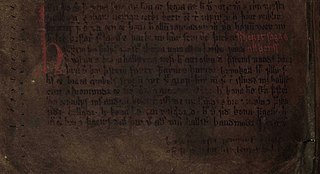
Gull-Þóris saga, also known as Þorskfirðinga saga, is one of the sagas of Icelanders. The saga takes place in the west of Iceland during the Settlement of Iceland in the second half of the ninth century. It tells the story of Þórir Oddsson, a chieftain in Þorskafjörður, and his dispute with his neighbour Hallr. Scholars have argued that the saga is the work of Sturla Þórðarson.
Berle-Kari was a viking chieftain who lived in ninth-century Norway. His home was at Berle, in present-day Bremanger in Sogn og Fjordane county. Landnámabók names him as the son of Vemund, and brother of Skjoldolf, one of the early settlers of Iceland.

In Icelandic folklore, the Lagarfljótsormur or Lagarfljót worm is a lake monster purported to live in Lagarfljót, a lake by the town of Egilsstaðir.
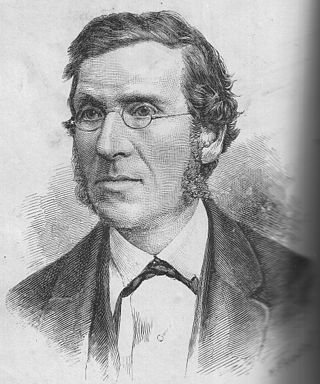
Jón Árnason was an Icelandic author, librarian, and museum director who made the first collection of Icelandic folktales.

Djákninn á Myrká is an Icelandic folk tale. The setting of the tale is Myrká, in Eyjafjörður, located in Iceland.
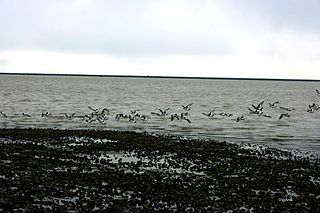
Holtsós, sometimes anglicised as Holtsos, is a tidal lagoon south of Eyjafjallajökull in south Iceland. It is fed by the Holtsá river and separated from the Atlantic Ocean by a narrow strip of sand. It is approximately 4 kilometres (2.5 mi) long by 2 kilometres (1.2 mi) wide and approximately 2 metres (6.6 ft) deep at its deepest point.
Guðni Jónsson was an Icelandic professor of history and editor of Old Norse texts.
Einar Ólafur Sveinsson, often abbreviated Einar Ól. Sveinsson was an Icelandic scholar of Old Norse literature who was Professor of Icelandic Literature at the University of Iceland. His writings on and editions of sagas were particularly influential.
Thordis Markusdottir, known as Stokkseyrar-Dísa (1668–1728), was an Icelandic magician (Galdrmaster). She is known in history for her alleged magical powers. She is the subject of a least ten different folk sagas depicting her experiments within magic or Galdr.
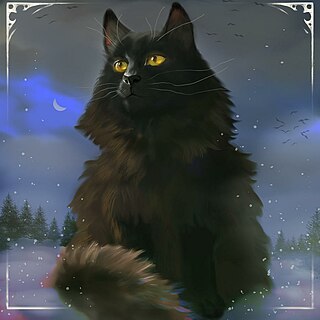
The Yule cat is a huge and vicious cat from Icelandic Christmas folklore that is said to lurk in the snowy countryside during the Christmas season and eat people who do not receive new clothing before Christmas Eve. In other versions of the story, the cat just eats the food of people without new clothes. Jólakötturinn is closely associated with other figures from Icelandic folklore, considered the pet of the ogress Grýla and her sons, the Yule Lads.
References
- 1 2 Þorgilsson & Ellwood 1898, p. 35.
- 1 2 Cochrane 2015, pp. 189–190.
- ↑ OID.
- 1 2 3 Mar-mennill.
- ↑ Landnámabók, Annar hluti, Chapter 5.
- ↑ Hálfs saga og Hálfsrekka, Chapter 7, Frá spám marmennils.
- ↑ Árnason.
- ↑ Þá hló marbendill.
- ↑ Sävborg 2016, p. 124.
